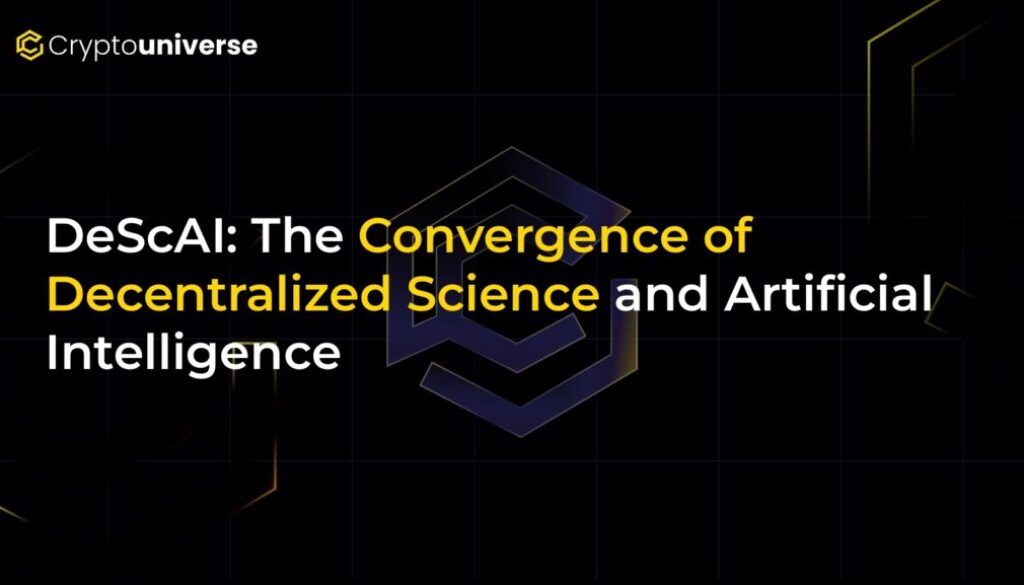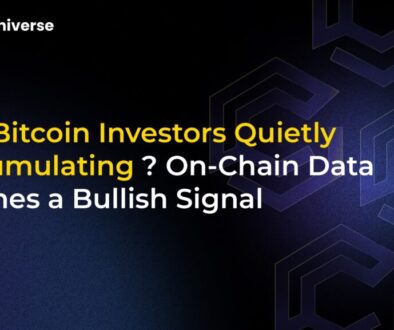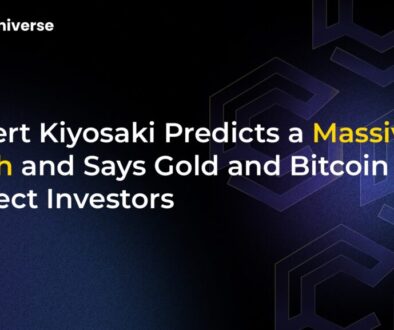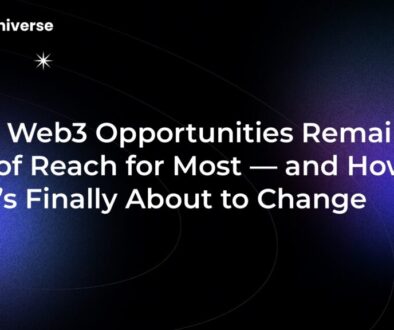DeScAI: The Convergence of Decentralized Science and Artificial Intelligence

The Next Frontier: How DeScAI is Revolutionizing Scientific Discovery
Science is undergoing a seismic shift. Two of the most powerful technologies of our time, blockchain and artificial intelligence, are no longer operating in separate orbits. They are converging to create a new paradigm that promises to accelerate discovery, democratize knowledge, and rebuild trust in research. This powerful fusion is called DeScAI: the convergence of Decentralized Science and Artificial Intelligence.
For decades, scientific progress has been hampered by legacy systems. Research is often trapped behind paywalls, funding is controlled by a handful of institutions, and valuable data is locked away in private silos. At the same time, the rise of AI, while revolutionary, has concentrated immense power in the hands of a few tech giants, creating opaque models and restricting access.
DeScAI offers a radical new path forward—a future where science is open, verifiable, and collectively owned. Let’s explore how this groundbreaking concept works and why it’s set to change everything.
The Problem with the Old Guard: Centralized Science and AI
To understand the promise of DeScAI, we first need to acknowledge the challenges it aims to solve:
- Gatekeeping and Silos: Traditional scientific publishing and funding create bottlenecks. This slows down innovation and often leaves brilliant but lesser-known researchers on the sidelines.
- The Reproducibility Crisis: Many scientific findings are difficult, if not impossible, to reproduce. Opaque methodologies and inaccessible data erode trust in the scientific process itself.
- Centralized AI Power: Today’s most powerful AI models are controlled by a few corporations. This leads to biased algorithms, a lack of transparency, and a system where users merely “rent” access without true ownership or input.
- Broken Incentive Structures: The current system often rewards publication quantity over quality and discourages the sharing of negative results, which are crucial for genuine scientific advancement.
Pillar 1: Decentralized Science (DeSci)
Decentralized Science, or DeSci, is a movement to build a more open and equitable scientific ecosystem using Web3 technologies. It leverages blockchain to re-engineer how research is funded, shared, and verified.
At its core, DeSci introduces:
- Transparent & Verifiable Provenance: By recording research data, methodologies, and results on an immutable blockchain, DeSci creates a permanent, auditable trail. This makes it easy to verify where data came from and how conclusions were reached.
- Tokenized Incentives: Using cryptocurrencies and tokens, DeSci projects can create new economic models to fund research. This could involve crowdfunding studies through DAOs (Decentralized Autonomous Organizations) or rewarding scientists for sharing data and peer-reviewing work.
- Community Governance: DeSci platforms empower the community—not just elite institutions—to have a say in which research gets funded and pursued, fostering a more diverse and pluralistic scientific landscape.
Pillar 2: Artificial Intelligence (AI) in Science
Simultaneously, AI is transforming the very practice of science. From automating lab experiments to analyzing massive datasets, AI is acting as a powerful accelerator for discovery. It can:
- Generate Hypotheses: AI models can sift through vast volumes of scientific literature and data to identify patterns and propose novel research questions that humans might miss.
- Accelerate Drug Discovery: As seen in biomedicine, AI can predict how molecules will interact, drastically cutting the time and cost required to develop new drugs.
- Validate Models: AI can run complex simulations and validate experimental results with incredible speed and accuracy.
The DeScAI Synthesis: Intelligence Meets Memory
DeScAI is where these two pillars merge into a single, self-improving system. Think of it this way:
AI is probabilistic. It predicts, learns, and adapts.
Blockchain is deterministic. It records, secures, and verifies.
Together, they create a powerful loop of intelligence and memory. The AI acts as the engine of discovery, generating hypotheses and analyzing data. The blockchain acts as the immutable ledger of truth, ensuring every step of the process is transparent, verifiable, and tamper-proof.
This creates a recursive, self-verifying system where autonomous AI agents can conduct research within a trust-minimized network. The results are not just published; they are cryptographically proven. This system could radically reduce the latency between a hypothesis and its verification, turning scientific legitimacy from a static publication into a live, contestable signal.
What Does a DeScAI Future Look Like?
The
- Accelerated Discovery Cycles: By automating research and verification, DeScAI can dramatically compress the time it takes to go from an idea to a trusted result.
- Trust and Reproducibility by Design: With every piece of data and every analytical step recorded on-chain, reproducing and validating studies becomes trivial. This helps solve the reproducibility crisis and rebuilds faith in science.
- Fair Attribution and Ownership: Blockchain allows for granular and automated attribution. Scientists, data contributors, and even the AI models themselves can be fairly compensated for their contributions through smart contracts.
- AI as a Public Good: By building AI on decentralized infrastructure, DeScAI helps prevent the concentration of power. AI models and the data they are trained on can become open, transparent resources for the global community.
The Road Ahead: From Components to Orchestration
The individual pieces of the DeScAI puzzle exist today: decentralized ledgers, cryptoeconomic protocols, and sophisticated AI agents. The next great challenge is orchestration—stitching these elements together into a seamless, recursive system for knowledge production.
The fusion of DeSci and AI represents more than just a technological upgrade. It’s a fundamental shift in the philosophy of science—a move towards a more open, collaborative, and trustworthy future. As this powerful new stack comes online, it has the potential to unlock a new golden age of human discovery.


